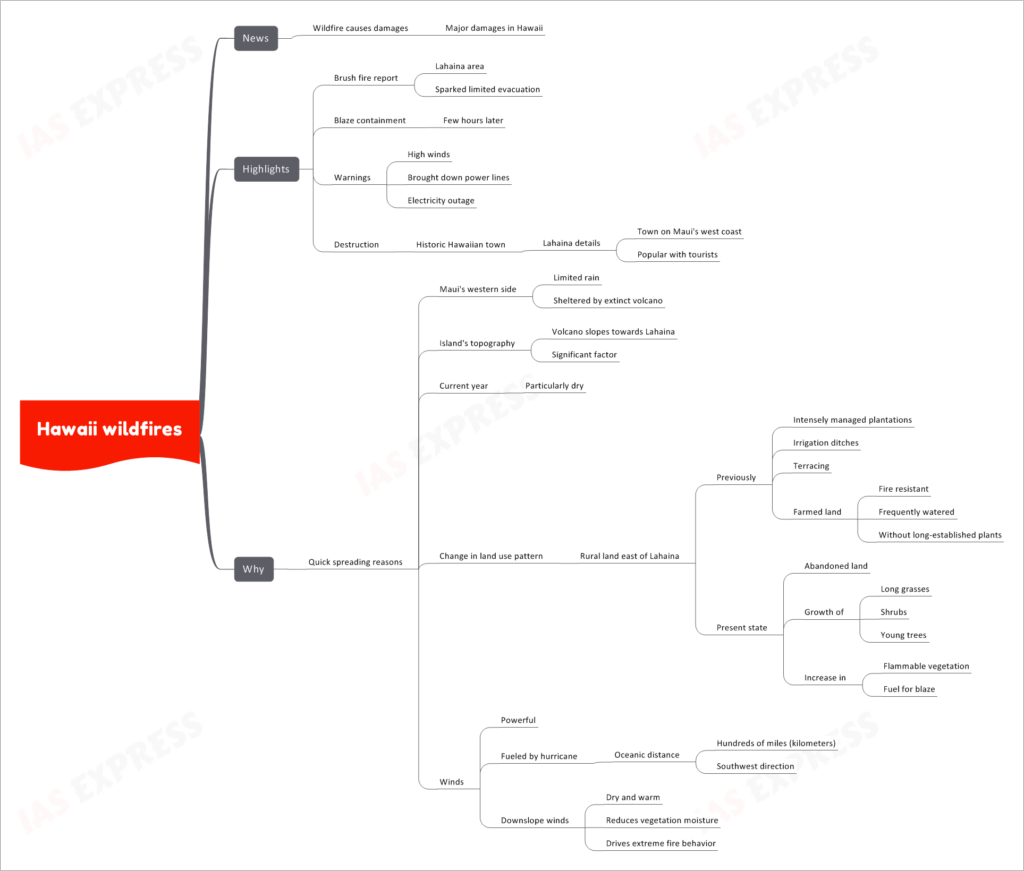Hawaii Wildfire

Recent news reports have highlighted the devastating impact of wildfires in Hawaii, particularly in the Lahaina area on Maui’s west coast. These wildfires have caused significant damages, leading to evacuations, power outages, and destruction of historical sites.
Wildfire Causes and Major Damages in Hawaii
Wildfire Impact
The recent wildfires in Hawaii have resulted in major damages, particularly in the historic town of Lahaina, a popular tourist destination on Maui’s west coast. The fires have led to evacuations, power outages, and the destruction of iconic landmarks.
Highlights of the Wildfire Incident
Brush Fire Report
The wildfire incident in Hawaii’s Lahaina area was initially reported as a brush fire. This fire was sparked under specific circumstances, leading to limited evacuations and concerns about containment.
- Lahaina Area
- The wildfire primarily affected the Lahaina area, a picturesque town on Maui’s west coast.
- Lahaina is known for its historical significance and popularity among tourists.
- Sparked Limited Evacuation
- The severity of the fire prompted authorities to initiate limited evacuations in the vicinity to ensure residents’ safety.
Blaze Containment
Efforts to contain the wildfire were initiated, and after a few hours, there were some positive developments.
- The firefighting teams worked tirelessly to gain control over the blaze.
- Within a few hours of the initial outbreak, the authorities reported progress in containing the fire.
Warnings and Impact
High Winds and Power Lines
The wildfire’s rapid spread was exacerbated by high winds, which played a crucial role in its destructive path.
- Powerful winds in the region contributed to the fast-paced expansion of the wildfire.
- These winds brought down power lines, causing widespread electricity outages in the affected areas.
Destruction of Historic Hawaiian Town
The historic town of Lahaina suffered extensive damage due to the wildfire.
- Lahaina, located on Maui’s west coast, holds immense historical significance.
- The town’s popularity among tourists adds to its cultural and economic value.
Factors Contributing to the Rapid Spread
Quick Spreading Reasons
Maui’s Western Side
The specific geography and climate conditions of Maui’s western side were key factors in the wildfire’s rapid spread.
- Limited rainfall in the region created dry conditions conducive to the spread of wildfires.
- The area is sheltered by an extinct volcano, creating an environment prone to quick fire propagation.
Island’s Topography
The island’s topography, particularly the slope towards Lahaina, played a significant role in the wildfire’s spread.
- The slope directed the fire’s path towards Lahaina, exacerbating its impact.
- This topographical feature increased the vulnerability of the town to wildfires.
Current Year’s Dry Conditions
The current year experienced particularly dry conditions, further contributing to the wildfire risk.
- Insufficient rainfall and drought conditions made the region more susceptible to ignition.
Change in Land Use Pattern
Changes in land use patterns around Lahaina contributed to the wildfire’s severity.
- Previously, the area was characterized by intensively managed plantations, irrigation ditches, and terracing.
- The transition to abandoned land led to the growth of flammable vegetation, including long grasses, shrubs, and young trees, providing ample fuel for the blaze.
Winds and Hurricane Influence
The powerful winds that fueled the wildfire were influenced by a distant hurricane.
- These winds traveled hundreds of miles in a southwest direction from the hurricane’s location.
- The downslope winds were dry and warm, reducing vegetation moisture and driving extreme fire behavior.
Mitigation and Future Preparedness
Efforts to mitigate the impact of the wildfires and enhance future preparedness are crucial for safeguarding Hawaii’s communities and landscapes.
- Invest in early warning systems to detect and respond to wildfires more effectively.
- Develop and implement controlled burns and vegetation management strategies to reduce the risk of extensive wildfires.
- Raise awareness among residents and tourists about fire safety measures and evacuation plans.
If you like this post, please share your feedback in the comments section below so that we will upload more posts like this.

